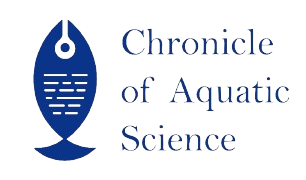| File | Action |
|---|---|
| CoAS_V1IS3_03 | Download |
- 919088951040 call us
- chronicleofaquaticscience@gmail.com Mail us
CoAS_V1IS3_03
Review Article
Battered and breaded products from fish and shellfish: A Review
Sedyaaw Panchakarla*, Ajay Tandle, Supriya Meshre and Kawade Sanket Sunil
Abstract
Battered and breaded seafood products play a significant role in the global food industry, offering consumers convenient and appetizing options for incorporating fish and shellfish into their diets. This review aims to provide a comprehensive analysis of battered and breaded products derived from fish and shellfish, focusing on their quality attributes, nutritional composition, and consumer perception. Quality attributes of battered and breaded seafood products are multifaceted, encompassing sensory characteristics, texture, and overall acceptability. Factors such as coating thickness, crispiness, and moisture retention play pivotal roles in determining product quality. Studies have explored various techniques for improving batter adhesion and texture, including the incorporation of different breading materials, additives, and processing methods. These advancements have contributed to enhancing product quality, resulting in greater consumer satisfaction.
Keywords
Batter, Fish, Products, Coating, Oil
References
A. Santill´an-Moreno, F. Mart´ınez-Bustos, E. Castano-Tostado, and S. L. AmayaLlano, “Physicochemical characterization of extruded blends of corn starch–whey protein concentrateagave tequilana :ber,” Food and Bioprocess Technology, vol. 4, no. 5, pp. 797–808, 2011.
Balachandran,K.K. (2001). Post harvest technology of fish and fishery products. Daya.2:288-307.
C. Dourado, C. Pinto, F. J. Barba, J. M. Lorenzo, I. Delgadillo, and J. A. Saraiva, “Innovative non-thermal technologies affecting potato tuber and fried potato quality,” Trends in Food Science & Technology, vol. 88, pp. 274–289, 2019.
Chinmaya Nanda , Kasturi Chattopadhyay , Ramakrishna Reddy , Mohammed Akram Javith, Sambit Kisore Das , Amjad K. Balange , Binaya Bhusan Nayak & K. A. Martin Xavier (2020): Evaluation of Different Conventional Breading Materials on Functional Quality Attributes of Battered and Breaded Fish Cutlets, Journal of Aquatic Food Product Technology, DOI: 10.1080/10498850.2020.1786205.
Das, Oishi & Kannuchamy, Nagalakshmi. (2014). Breaded and Battered Seafood Products: Principles and Processing Methods. Breverage and Food World. 41. 26-29.
E. K. Oke, M. A. Idowu, O. P. Sobukola, S. A. O. Adeyeye, and A. O. Akinsola, “Frying of food: a critical review,” Journal of Culinary Science & Technology, vol. 16, no. 2, pp. 107–127, 2018.
Flick, G. J., Baura, M. A., and Enriquez, L. G., (1990) Processing finfish, The seafood industry, Martin, R. E. and Flick, G. J., Eds. Van Nostrand Reinhold, New York, pg.177.
Hsia HY, Smith DM, Steffe JF. 1992. Rheological properties and adhesion characteristics of flour-based batters for chicken nuggets as affected by three hydrocolloids. J Food Sci. 57(1):16–18.
J. T. Liberty, J. Dehghannya, and M. O. Ngadi, “Effective strategies for reduction of oil content in deep-fat fried foods:a review,” Trends in Food Science & Technology, vol. 92, pp. 172–183, 2019.
Jorjani, S., Khanipour, A. A., Soltani, M., Matalebi, A., Kamali, A., & Ghelichi, A. (2019). Production of breaded kilka (Clupeonella cultriventris) using two different batters and determination of chemical, microbial and sensory properties. Iranian Journal of Fisheries Sciences, 18(4), 684-698.
Nair, M.K. and Girija, S. (1993) Quality control of molluscan shellfish products. Mar. Fish. Infor. Serv.T&E Ser. 125: 17-21.
Nimish M S,Balasundari S and Felix S .Fish in nutrition.Tamilnadu Dr.J.Jayalalitha Fisheries University . 2018 pg;83-84.
P. Varela and S. M. Fiszman, “Hydrocolloids in fried foods. A review,” Food Hydrocolloids, vol. 25, no. 8, pp. 1801– 1812,2011.
Pagarkar AU, Rathod NB, Baug TE, Pawar PP, Desai AS (2012) Standardisation of batter used for preparation of pangasius (Pangasianodon hypophthalmus) cutlet. Asian J Microbiol Biotechnol Environ Sci 14(4):493–496.
Pawar PP, Pagarkar AU, Rathod NB, Baug TE, Rather MA (2012) Standardisation of recipe for fish cutlet product from fresh water fish Catla (Catla catla). Eur J Exp Biol 2(6):2043–2048.
Pawar PP, Pagarkar AU, Rathod NB. Effect of chilled storage on quality characteristics of battered and breaded snack product from large sized Catla (Catla catla). J Food Sci Technol. 2020 Jan;57(1):52-59. doi: 10.1007/s13197-019-04028-6.
Epub 2019 Aug 17. PMID: 31975707; PMCID: PMC6952510.
R. G. Brannan, E. Mah, M. Schott et al., “InHuence of ingredients that reduce oil absorption during immersion frying of battered and breaded foods,” European Journal of Lipid Science and Technology, vol. 116, no. 3, pp. 240–254, 2014.
R. Pongsawatmanit, S. Ketjarut, P. Choosuk, and P. Hanucharoenkul, “Effect of carboxy methyl cellulose onproperties of wheat Hour-tapioca starch-based batter andfried, battered chicken product,” Agriculture and Natural Resources, vol. 52, no. 6, pp. 565–572, 2018.
S. Ketjarut and R. Pongsawatmanit, “InHuence of tapioca starch on thermal properties of wheat Hour-based batter and quality of fried battered chicken wingsticks,” International Journal of Food Engineering, vol. 11, no. 5, pp. 641–650, 2015.
Sreelekshmi, K. R., & Ninan, G. (2018). Battered and breaded fish products. ICAR-Central Institute of Fisheries Technology. T. V. Gadiraju, Y. Patel, J. M. Gaziano, and L. Djouss´e, “Fried food consumption and cardiovascular health: a review of current evidence,” Nutrients, vol. 7, no. 10, pp. 8424–8430,2015.
V. Venugopal, (2006). Chapter 9: Coated Products Seafood Processing.Pg.259- 280.
Xavier, K. A. M., Hauzoukim, K., Kannuchamy, N., Balange, A. K., Chouksey, M. K., & Venkateshwarlu, G. (2017). Functionality of chitosan in batter formulations and its effect on physicochemical quality parameters of enrobed fish sticks. Carbohydrate Polymers, 127, 189–194.
- Published online
- 31st August, 2023
How to Cite the Article
Panchakarla, S., Tandle, A., Meshre, S. and Kawade, S. S. (2023). Battered and breaded products from fish and shellfish: A Review. Chronicle of Aquatic Science 1(3):15-22
Copyright
This is an open-access article distributed under the terms of the Creative Commons Attribution License (CC BY). The use, distribution or reproduction in other forums is permitted, provided the original author(s) and the copyright owner(s) are credited and that the original publication in this journal is cited, in accordance with accepted academic practice. No use, distribution or reproduction is permitted which does not comply with these terms.

CoAS_V1IS3_03


